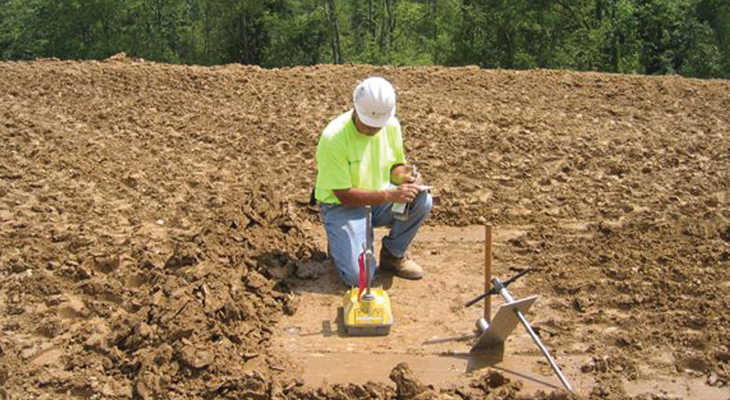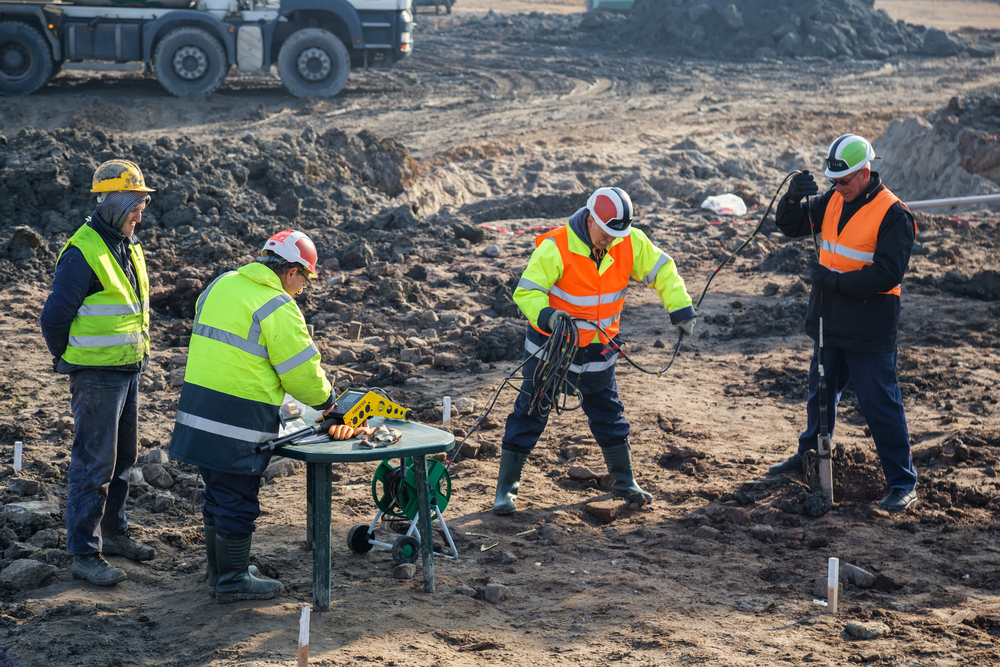The Value of Geotechnical Design in Attending To Ecological Obstacles and Enhancing Building And Construction Security
Geotechnical design functions as a keystone in the crossway of environmental stewardship and building and construction safety and security, providing essential insights into the habits of soil and rock under various problems. This technique not only addresses pressing environmental obstacles such as soil erosion and groundwater protection however also improves the robustness of infrastructure against all-natural risks. By applying strategic site examinations and customized mitigation procedures, geotechnical engineers play a vital duty in safeguarding both human lives and ecological integrity. The intricacies of these difficulties increase vital inquiries about the future instructions of this area and its implications for sustainable advancement.

Function of Geotechnical Engineering
Geotechnical engineering plays a vital function in the design and construction of framework by addressing the behavior of dirt and rock products under different conditions. This field of design is important for understanding the interaction in between frameworks and the ground, which consists of figuring out the load-bearing ability of soil, analyzing security, and forecasting prospective settlement or failure.
Geotechnical engineers are accountable for conducting website examinations, which include sampling and screening soil and rock to gather information on their chemical and physical homes. This info is important for designing structures, preserving wall surfaces, and other earth-retaining structures that make certain safety and security and durability. Geotechnical engineering informs the choice of appropriate building and construction techniques and materials, therefore lessening risks connected with soil actions.
Additionally, the integration of geotechnical design principles right into urban preparation and environmental monitoring is important for addressing obstacles such as ground contamination and groundwater management. By recognizing geotechnical factors, engineers can create sustainable services that enhance the resilience of facilities versus all-natural risks, while additionally advertising environmental stewardship. Eventually, the role of geotechnical engineering is vital for attaining safe, sturdy, and ecologically mindful construction practices.
Soil Disintegration Reduction
Soil erosion positions a considerable threat to both environmental security and facilities stability, impacting approximately 24 billion tons of productive dirt shed every year worldwide. This sensation is exacerbated by elements such as deforestation, urbanization, and bad agricultural methods. Geotechnical engineering plays a pivotal role in creating effective soil erosion reduction strategies that safeguard both the environment and building jobs.
One strategy entails the implementation of disintegration control methods such as plant life planting, which maintains soil through origin systems. In addition, the construction of preserving balconies and walls can successfully lower surface drainage and shield at risk locations from erosion. Proper water drainage style is likewise important; it reduces water accumulation and directs excess runoff away from important frameworks.
Additionally, geotechnical designers use soil stablizing strategies, such as the application of geotextiles and eco-friendly mats, to improve dirt cohesion and prevent deterioration - geotechnical specialist. Normal tracking and assessment of erosion-prone websites enable prompt interventions, ensuring long-term sustainability. By integrating these strategies, geotechnical engineering not only minimizes the impacts of soil disintegration but also contributes to the resilience of facilities versus environmental difficulties, ultimately cultivating a much safer and more lasting developed setting
Groundwater Protection Methods
Groundwater acts as an essential source for alcohol consumption water, farming, and commercial processes, making its defense necessary for ecological sustainability and public health and wellness. Reliable groundwater security strategies are essential in minimizing contamination dangers and guaranteeing the longevity of this resource.

Regular surveillance of groundwater high quality is also essential, enabling very early discovery of contamination sources and assisting in prompt removal efforts. Employing sophisticated technologies, such as geophysical studies and remote sensing, aids in recognizing prospective threats to groundwater gets.
Additionally, public education and learning and stakeholder involvement are critical, promoting community assistance for groundwater defense campaigns. about geotechnical engineering. By integrating governing measures, technological innovations, and community participation, we can develop an extensive structure that safeguards groundwater resources while promoting lasting growth and building and Get the facts construction practices
Landslide Risk Administration
Landslides position considerable dangers to both human safety and security and infrastructure, making effective danger monitoring strategies necessary. Geotechnical design plays an essential duty in determining, examining, and mitigating landslide threats. An extensive understanding of slope stability, soil auto mechanics, and hydrology is vital for creating reliable danger management strategies.
The very first step in landslide threat administration entails complete website examinations, which include geological mapping and dirt screening. These examinations help designers assess the potential for landslides by recognizing important elements such as slope angles, soil look at this web-site make-up, and water material. Utilizing innovative technologies such as remote noticing and geophysical surveys can improve the precision of these assessments.
Once threats are determined, suitable mitigation measures can be implemented. These may consist of design options such as maintaining walls, drain systems, and incline stablizing methods. Moreover, checking systems must be established to identify indications of ground activity and modifications in water degrees, permitting positive treatments.

Enhancing Construction Safety
Building sites often present a myriad of threats that can endanger employee security and project stability. Geotechnical engineering plays an essential role in boosting building safety by supplying vital understandings right into subsurface problems. Through comprehensive soil and rock evaluation, geotechnical designers can recognize potential dangers, such as soil instability, groundwater problems, and seismic susceptabilities, which may endanger the security of construction activities.
Executing geotechnical options, such as proper structure layout and using preserving structures, alleviates these risks significantly. These remedies not only make sure the stability of the structures being constructed however likewise create a more secure working environment for building employees. Furthermore, strenuous tracking and analysis of website problems throughout the building procedure are critical. Using innovative technologies like ground-penetrating radar and inclinometer systems enables real-time information collection, enabling prompt treatments when risks are spotted.
Additionally, cultivating a society of safety and security via training and adherence to developed safety and security methods further enhances construction website safety. By integrating geotechnical competence into the planning and implementation phases, building and construction tasks can accomplish higher safety requirements, inevitably securing workers and ensuring effective task conclusion.
Final Thought
Finally, geotechnical engineering serves as a vital self-control in dealing with ecological obstacles and promoting building security. Through reliable dirt disintegration reduction, groundwater defense approaches, and landslide danger management, geotechnical engineers add to the advancement of resistant infrastructure. The assimilation of these methods cultivates a more secure building and construction environment and improves the sustainability of civil design projects. Ultimately, the competence of geotechnical designers is crucial in guarding from this source both natural deposits and human lives versus prospective risks.
Geotechnical design offers as a keystone in the intersection of ecological stewardship and building security, offering critical understandings into the actions of soil and rock under different problems. Geotechnical engineering educates the option of appropriate building approaches and products, thus reducing threats connected with soil habits.
Geotechnical design plays a pivotal role in developing effective dirt erosion reduction approaches that guard both the atmosphere and building and construction projects.
Additionally, geotechnical engineers utilize dirt stabilization strategies, such as the application of geotextiles and eco-friendly floor coverings, to boost soil communication and stop degradation. Through comprehensive dirt and rock analysis, geotechnical designers can identify possible dangers, such as dirt instability, groundwater issues, and seismic vulnerabilities, which might jeopardize the safety of building activities.